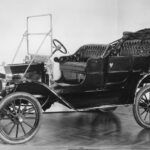When considering a Jaguar car, it’s important to understand the fuel consumption and emissions figures provided. These figures, often presented as NEDC2 or WLTP values, stem from official manufacturer tests conducted in accordance with EU legislation. These tests are performed with a fully charged battery for applicable models and are primarily intended for comparison across different vehicles.
It’s crucial to recognize that real-world fuel economy, CO2 emissions, energy consumption, and driving range for Jaguar Cars can deviate from these standardized test results. Several factors contribute to these variations. Driving styles play a significant role, with more aggressive driving typically leading to higher fuel consumption. Environmental conditions, such as temperature and weather, also impact efficiency. The vehicle’s load, wheel fitment, and any accessories fitted can further influence these figures. For electric and plug-in hybrid Jaguar models, the actual route and battery condition are additional variables affecting the range.
Therefore, while the provided NEDC2 and WLTP figures offer a valuable benchmark for comparing Jaguar models and understanding their potential performance, they should be viewed as estimates. Real-world driving experiences will likely vary based on the combination of factors mentioned above. For detailed WLTP figures specific to models like the Jaguar XF, F-TYPE, E-PACE, F-PACE, I-PACE, and XE, refer to the official Jaguar website for comprehensive information. Keep in mind that charging times for electric and plug-in hybrid Jaguars are also subject to variability based on battery age, condition, temperature, existing charge, charging facility, and duration of charge.
